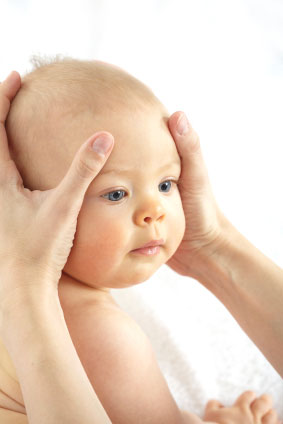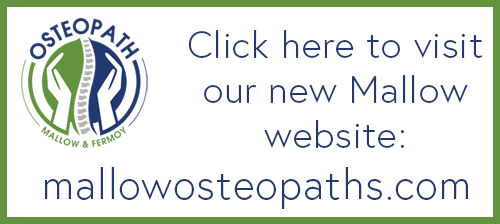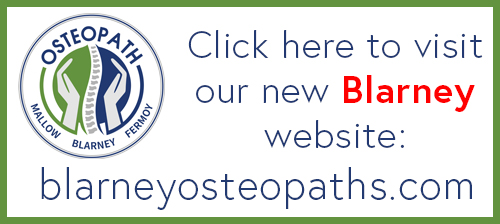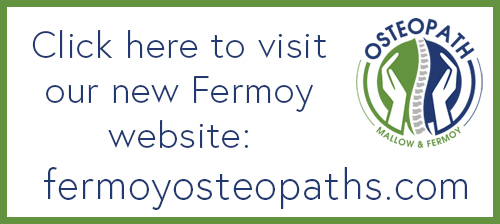


Frequently Asked Questions
Who can benefit from Osteopathy?
As all osteopathic techniques are safe, gentle and highly effective, everyone from the newborn to the elderly can benefit from osteopathic treatment .
What conditions are treated by Osteopathy?
Commonly treated conditions include:
Back Pain/ Disc Injuries
Neck Pain/ Shouler Pain/ Arm Pain
Muscle pain in the body can be extremely painful for patients and often patients are very worried that there is something sinister going on in their body due to the amount of pain that they actually endure. The pain can then travel to other areas - up the back of the neck which can cause other problems such as headaches or shooting pain down the arm causing pins and needles into the fingers to mention a few. Patients often admit to doing "nothing with it for several weeks" because they "thought it would get better on its own", and would admit to immobilising the joint, saying "I haven't moved the shoulder because I thought if I rest it, it would get better of its own accord", but in fact the opposite can occur and the area gets more "locked up". Other patients can complain that now they can't sleep or lie on that shoulder as it's causing pain at night and they have a whole host of other problems arsing from a simple "jar of the shoulder" which has led to the patient getting more and more restricted into the rest of the muscles in the body.
As the neck is a delicate area osteopaths are highly trained professionals and they use very fine movement to treat this complex area by finely developed sense of palpation that enables them to assess the tiny movements within the individual facet joints of the neck.
A detailed case history is obtained by the practitioner and specific osteopathic testing is undertaken to ascertain the restricted area and to get to the root of the problem. If the osteopath has concerns that there may be an underlying condition which is not suitable for osteopathic treatment you will be asked to return to your GP for their advice and appropriate investigations e.g. bloods tests or MRI.
The aim of any osteopathic treatment is to get the patient pain free as soon as possible and obtain practical advice on posture, exercises and management tips can also help, and little adjustments to lifestyle can help prevent further damage.
Sciatica
Unfortunately Sciatica has become more common due to our increasingly sedentary lifestyles and not enough exercise, patients often admit to spending long periods of time in their car commuting to work, sitting all day at a desk and going home where they unwind in front of the telly. The more compression through the body and the less exercise to mobilizing the whole musculoskeletal system the more potential for problems. Life has gotten very busy for us all, but gentle mobility e.g. going for a ten minute walk at lunch time can free up the muscles of the lower back and can free up the whole body by increasing blood flow, nerve flow and lymphatic drainage.
The majority of sciatic symptoms are related to problems in the last two lower two inter-vertebral discs that are designed to absorb impressive forces, the spine is designed to move in flexion, extension, side bending, and rotation so you're moving from a hyper mobile area i.e. the spinal column, where there is a lot of potential movement to an area that doesn't move as much i.e. the sacrum, and when you're moving from a hyper mobile area to hypo mobile area there is potential for damage or impingement of the nerves. Also the angle where the nerves exit the lower vertebra are smaller than the verbera higher up the spinal column therefore more susceptible to damage. The degenerative process and traumatic injuries to these discs can lead to impingement of the nerves that provide sensation and power to the back of the thigh and leg, that is why a person who is suffering from sciatica pain can complaining of their leg "giving way" or altered sensation into the back of the leg that is made worse by sitting, bending, lifting and walking up hills. Sciatica can happen at any age it's also common in pregnancy due to the entrapment of the nerve in the piriformis muscle (the buttock area) usually in the last trimester due to the width and size of the baby causing an increased curve into the lower back.
Osteopathy can help alleviate compression on the disc through traction of the lower back, mobilizing through the hip therefore loosing up the muscles that run from the lower back to the pelvis into the hip and sacrum region and the muscles of the buttock and thigh area therefore taking the pressure off the nerves that cause the shooting pain down the leg.
Hip, Knee and Ankle Pain
The osteopath will do a standing observation to see if there is any torsion/twist going through the body, how the legs are positioned, are the feet turned inwards/outwards, is one shoulder higher than the other, is the head side bend to one side, what the foot arches are like, are they flat footed, is there any visible scars on the body could there be adhesions due to surgery, what is the posture like, are there any increased curves in the spine. If the patient is flat footed the ankle will drop inwards changing the whole mechanics from the ankle to the knee though to the hips and into the soft tissue of the buttock and into the lower back, which can lead to lower back pain.
Restrictions in the body can be ascending or descending - restrictions can come from the top of the body and translate down through the muscles and ligament therefore locking up the lower limb i.e. whiplash from a road traffic accident -problems that arise in the neck can travel downwards, or ascending restriction i.e. if a person is flat footed the ankle will drop inwards there for the ligaments on the inside of the ankle will be under more stain than they should be leaving them labile for potential damage of sprain/strain, because the ankle is in an abnormal position, it will put more pressure on the knee joint and this can cause patients to suffer from knee pain, this can throw the whole musclosketal system out of sync, which can tighten up the muscles into the bottom altering the movement of the hip and patients can complain of pain on walking or pain on the outside of the pelvis, this can ofen affect sports people - if the hip is tight and they are training and putting pressure through a joint that is not functioning properly they are open to damaging the muscles and ligaments of that area.
The osteopath is trying to get the body to move to it optimum by addressing any imbalances in the body, if orthotics are need the osteopath will refer the patient to a podiatrist.
Arthritis
O.A. is usually experienced in the neck, low back, hips and knees. Typical symptoms include joint swelling, pain and stiffness, patients often complain of having to take a "couple of minutes to loosen out" if sitting for long periods of time. If a patient has early degeneration of a hip joint it can tighten up the muscles into the groin, buttock and can travel to the knee.
Osteopathy looks at the whole body not just the joint that is in trouble, if the right hip is restricted and stiff and sore, patients can have problems going from sitting to standing often getting a stab of pain into the S.I. (sacroiliac joint) the joint between the sacrum and pelvis. If a patient has pain in the right hip the patient is often sidebending away from pain therefore loading the left hip putting more strain through the muscles of the left hip, this in turn will put an abnormal curve through the lower back locking up the muscles in the lower back travelling up the spine to the shoulder blades and neck region.
Osteopaths work above and below the affect area therefore to affect the middle, so if a patient has right hip pain the osteopath will loosen up the muscles into the knee, groin lower back and spinal column to take the pressure of the right hip therefore increasing flexibility, decreasing muscle tension inflammation and pain. Our joints start to degenerate in our late 20's but many of us may not get symptoms until much later in life, often patients complain of having O.A. and think that's there's not a lot to be done for their aches and pains and there is nothing to be done with it, but a huge amount can be done to stop the areas getting more and more locked up. Osteopaths can't reverse arthritis be they can help keep the joints as mobile as possible and through good advice we can keep them as pain free as possible. Giving the body an N.C.T. every couple of monthsand placing the patient on a maintenance osteopathic programme will greatly reduce the amount of pain and restriction in a patient's body that suffers form O.A. In addition to pain-killers and anti-inflammatory, an Osteopath can help greatly with overcoming the symptoms of arthritis through soft tissue massage, manipulation, stretching and exercise advice.
Muscular Strains/ Ligament Pains
A sprain or strain can occur at any age in any part of the body, from footballers twisting their knee at a football match, to a brick layer twisting awkwardly into the lower back at work, to a middle age women digging the gardening, to a child landing awkwardly on the trampoline. Ligaments are different to muscles, with regards to blood supply and nerves supply, that is why a muscle strain will heal sooner than a ligament sprain. It is very important to rehabilitate any injured joint if the patient doesn't want to have problems with the soft tissue in the future.
Having a disc problem, can really effect a person's quality of life, unless you have experienced acute lower back pain one does not know how depilating it can be, whether it is an inflamed facet joint (facet joints run on their side of the spine), a disc protrusion or a bulge (commonly known as a "slipped disc") indicates that the disc has sustained some physical damage which take time to resolve. Problems with the facet joint or disc can lead to pressure trapping spinal nerves, resulting in nerve pain like sciatica (a shooting type of pain) also it can result in neurological symptoms like pins and needles, numbness or weakness of the legs.
In the acute phase osteopathic treatment can ease the protective spasm around the inflamed disc and improve the mechanical function of the spine. The osteopath can give help and advice on the management of pain which is invaluable, such as the use of cold therapy to decrease the inflammation therefore improving flexibility and reducing stiffness, advice on stetches that will stop the increased muscle tension travelling up or down the body (often patients will complain of pain travelling into the hip/groin or between the shoulder blades) and the use of water therapy (having a bath or walking in the swimming pool) which will decompress the injured part of the back. Often patients are completely "locked up" when they present at the clinic with regards to muscle tension as they are afraid to move in case they do further damage.
The job of the osteopath in acute cases of lower back pain, is to get the patient pain-free as soon as possible and build the strength of the lower back so there is no further damage to the body and to prevent any injury in the future by giving advice on good back care once they are discharged as I say in practice "it's easy when you know how".
The osteopathic approach involves assessing the spine as a whole and trying to establish the reason why that particular disc/facet has become problematic. It may be that the disc/facet has sustained trauma, through a past sporting injury or road traffic accident, fall, overdoing it at the gym, gardening, doing DIY on the house, sleep aqwarldy, it could be due to a degenerative process or there may be as a result of the individuals anatomy e.g. an increased curve in the spine or scolosis which may be either due to a congenial (it has been there since birth) or an acquired problem (a person playing the guitar for years can be side bend to one side for prolonged periods) and increase muscle tension on one side more than the other and one shoulder will be higher than the other, therefore changing the biomechanicis of the frame work of the body which can lead to poor posture which has placed undue strain on one particular disc/facet.
Balance problems
Dizziness can occur due to changes in blood pressure, anaemia, low blood sugar, circulatory or neurological problems, once the patient is medically safe to treat and the dizziness is as a result of a muscluosketal/mechanical problem in the head and neck osteopathic treatment of such problems can help relieve these symptoms.
Vestibular neuritis can be as a result of viral infection of one vestibular nerve (there are 2 vestibular nerves, one to each inner ear.). Medical treatment to help the infection is important in the early stages, but as the nerve starts to recover vestibular rehabilitation exercises are helpful in speeding the return to normal balance and activity.
Osteopathy and Pregnancy
Osteopathic treatment for pregnant and new mums works physically with joints and muscles and does not involve taking any drugs of any kind, therefore it is safe to do and with no side effects whatsoever on unborn or nursing children.
Osteopathy during pregnancy is of benefit in facilitating an easy passage of the baby through the birth canal. Osteopathy can help by easing some of the physical discomforts common to pregnancy and can prepare for the demands of labour as well as help the mother recover after birth.
Posture
As the baby grows and the uterus enlarges, the mother's body has to adjust to support the increased abdominal weight. This requires the muscles of the back to work harder and the natural curves in the spine to change. Excessive forward rotation of the pelvis places pressure on the pubic symphysis and compresses the joints in the lower spine. This makes a big difference in how you carry yourself whilst pregnant especially towards the latter stages often mums to be can waddle in the last trimester due to lower back muscle tension, restriction into the hips, pelvic girdle pain (PGP), and symphysis pubis dysfunction (SPD).
Also at this time, the increased weight affects the feet causing them to flatten and widen which often causes them pain when walking. As your centre of gravity moves forward your lower back muscles (the muscles that keep you upright) are under more pressure and strain your neck and shoulder moves backwards to compensate for the lower back and belly moving forwards. As you move your shoulders back to counteract the weight forward so your head begins to move forward. . Postural changes impact all the way up to the neck and shoulders even contributing to fatigue and tension headaches. Occasionally weakness and pins and needles and may be experienced in the fingers. Mums to be can complain of swelling in the hands and feet in the latter stages of pregnancy osteopathy can help with lymphatic drainage and help disperse the fluid build up in the body therefore decrease the amount of tension into the upper and lower extremities of the body. Any previous back problems or unresolved injuries may contribute to difficulties in accommodating the changes of pregnancy.
Osteopathy during pregnancy can ease the effects of these changes on your body as your going through the different trimester therefore getting your body as free and as mobile as possible for the demands of labour.
Post Natal Care
From early pregnancy , hormonal changes begin to soften the ligaments throughout the body in preparation for labour. As a result, joints which are under pressure from the postural changes and weight increase can be over stretched causing considerable pain and disability such as in SPD. Also carrying your new baby and picking them up from their cot which involves full flexion of the lower back and placing the baby into the back of the car which involves rotation of the the lower back to carrying heavy car seats which loads the lower back, involves you performing more movements which your body is not accustomed to. After birth whiter it's a natural delivery or c-section the abdominal muscles can be weak and susceptible to injury. It is important for new mothers to get active as soon as it's possible and build up the strength into their bodies for the demands of a new baby.
Pain while feeding
The process of breast/bottle feeding inevitably leads to new mums having to maintain an unfamiliar posture for long periods several times throughout the day and night. The comfort of the baby whilst feeding is more important to a new mum than their own and they often find themselves positioned awkwardly, not wanting to move for fear of disturbing their baby whilst its feeding. This is often worse during the night. Mums often complain of neck and shoulder pain and as baby get older and the weight of the baby increases therefore putting more pressure and weight on the mother's forearm muscles this tension can travel up the mother's musculoskeletal system restricting range of movement into the neck and therefore causing pain into the outer area of the shoulder muscles and into the base of the neck which can lead onto headaches. Good feeding position of new mums is essential so the weight of the baby is taken by propped up cushions and not the mother's body.
Caesarean Sections
During the process of a caesarean birth, an incision is made across the abdominal wall cutting through the abdominal muscles. These muscles are vital in protecting your back from injury. There is a tendency not to use these muscles whilst they are healing as it can be painful to do so. Even after the healing process is complete you may have got out of the habit of using these muscles properly and feel a bit tight into the belly and lower back which leaves you vulnerable to back problems. Rehabilitation of the lower back is essential to get the postural muscle back working properly; once the mother has completely healed into abdominal area it is important to get back full mobility into the lower back and pelvic region to regain fluidity of the body as a whole. When an osteopath treats the new mother the whole body is assessed to see where the restriction lie and it is the osteopath job to realign the body and get the body function to the best of its ability once again.Osteopathy looks at these complaints from the point of view of the individual so no two patients will have exactly the same diagnosis or treatment.
Birthing Trauma
The osteopathic view is there are structural disorders, usually from the trauma associated with the events surrounding the birth that are strongly contributing to or causing problems in the child. This pain can be anywhere, but appears usually in the G.I. tract.
Osteopaths use gentle manual manipulation designated to restorer proper mechanic function. The goal is to release the compression around the cranial nerves that are connected to the G.I. tract.
Colic
Osteopaths use gentle manual manipulation designated to restorer proper mechanic function. The goal is to release the compression around the cranial nerves that are connected to the G.I.T (gastrointestinal tract).
Feeding difficulties
Sinus
Osteopathy helps by relieving obstructions and pain and improving venous and lymphatic flow to the head and improving mucocillary clearance by the means of facial drainage.
Disturbed sleeping patterns
If your child is still having difficulty going to sleep then osteopathy can help to correct this. Gentle treatment to the child's spine and nervous system can help to calm the child so that they are able to relax and sleep.
Asthma
Ear Infections
If you find your child in a cycle of ear/chest infections then osteopathy can help break this pattern in many cases making sure that the mechanical obstructions to the drainage of the estuation tubes is removed.
Behavioural Problems and Learning Difficulties
Special Needs
Improvement may be seen in a patient with cerebral palsy in a number of areas from physical comfort to co-ordination and neurological development. In Down's Syndrome there are changes in the structure of the skull affecting breathing and osteopathic treatment can help to relieve birth compressions through the face and nasal passages.
Every cell in the body needs a healthy physiology to thrive; osteopaths help to improve nutrition supply, drainage, and neurological control. The health of the body is dependent on freedom of movement of tissues. When the body is balanced and efficient, it will function with to its optium.
Growing pains/Poor Posture
Osteopathy can prevent problems and allow the framework of a Childs body to heal naturally and adjust to the postural and hormonal demands made of it. Osteopathy can help to release these stresses on the body, by correcting poor posture, reduce muscular aches and pain by structural osteopathic techniques.
What happens when I visit an Osteopath?
A thorough physical examination is then conducted - normally the Patient will be asked to remove some clothing to evaluate posture and mobility.
A diagnosis will be made and the Patient will be treated accordingly. The treatment is explained to the patient who will also receive an initial estimate of how many treatments may be required. Treatment will then commence with the Patient's consent.
What happens during the Treatment?
Soft tissue treatment enables both the assessment and relaxation of the muscles. From here a more global or local articulation is carried out to assess for mobility and any related restrictions. If required, the Osteopath may carry out more specific techniques on the affected area.
Treatment is typically very gentle and, is directed to improving the functioning of joints, ligaments, nerves and muscles, which have a profound effect on the overall functioning of the body. Advice is also given on diet, lifestyle, exercise and rehabilitation.
How many treatments will I need?
If the patient has an acute problem, then it is more effective to see the Patient within a few days. In these cases, treatments are generally spaced one week apart as this allows the body time to respond to the treatment. If the Patient's condition improves, this will be less frequent. Some conditions will see immediate results, however in most instances Patients require a series of treatments - usually between 4-6 sessions.
For chronic Patients the objective is to get to an optimum level of function and flexibility throughout the body. Usually Patients have ongoing regular sessions (approximately once every three months), which ensures maximum mobility.
Will treatments be painful?
Certain Patients experience some discomfort for a day after treatment but this usually subsides quickly, Patients are therefore recommended to take it easy after treatment to allow the body time to adapt to the changes that have occurred during treatment.
Do I need a referral to an Osteopath?
Whilst doctors and other health care practitioners refer patients to osteopaths, most patients self-refer.
What is your cancellations policy?
Cancellation under 24 hours - £15
Failure to Attend an Appointment - Full Fee
What is the difference between a cranial osteopath and a cranio-sacral therapist?
The main difference between a Cranial Osteopath and a Cranio-Sacral Therapist is in the training and depth of understanding of human anatomy.
Craniosacral therapists may use techniques similar to an Osteopath but they may not have an osteopathic background. Cranial Osteopathy can only be given by those who have qualified as an Osteopath.
Qualification as an Osteopath requires completion of a four year BSc (Honours) Degree which includes extensive training treating patients in an Osteopathic Clinic. Osteopaths can only practice once they are registered with their statutory regulatory body (which is the Osteopathic Council of Ireland).
Dr. William Garner Sutherland developed Crainal Osteopathy in the 1950’s. He developed and refined his techniques which formed part of an Osteopath’s training for their degree. Certain Osteopaths teach simplified versions of these techniques to lay people who now practice what is known as Cranio-Sacral Therapy.
What is the difference between an Osteopath, Physiotherapist or a Chiropractor
The following explanations are only for demonstration purposes only. For more in-depth information on the techniques and ailments treated by Physiotherapists and Chiropractors, please contact their relevant Regulatory Authority.
Osteopaths: Osteopathy takes a holistic view of the whole person in diagnosis, prevention and treatment of illness, diseases and injury. Osteopaths treat not only the site of pain but address the underlying cause of the problem.
Osteopaths can also have additional areas of expertise such as Cranial or Visceral treatments which can be helpful in treating babies with colic, or patients suffering from constipation.
Osteopaths rely on the heightened sensitivity to their hands in easing muscle tensions and altering neural feedback. Treatments can involve a wide range of techniques including joint articulation, soft tissue, muscle energy technique, joint manipulation and craniosacral Osteopathy. Osteopaths will have their own individual style in delivering these techniques so the manner in which the treatment is delivered may vary from one Osteopath to another.
Physiotherapists: Physiotherapists usually see patients for rehabilitation following surgery or trauma and tend to focus on the locality of the pain. Treatment may be administered by use of manual therapy, mechanical equipment and therapeutic exercise.
Chiropractors: Chiropractors concentrate mainly on the spine and frequently use X-ray to diagnose and treat their patients. Chiropractors treat their patients by “adjusting” the spine.

© 2025 Judith O'Sullivan Osteopathy, Mallow, Fermoy and Blarney, Co. Cork




